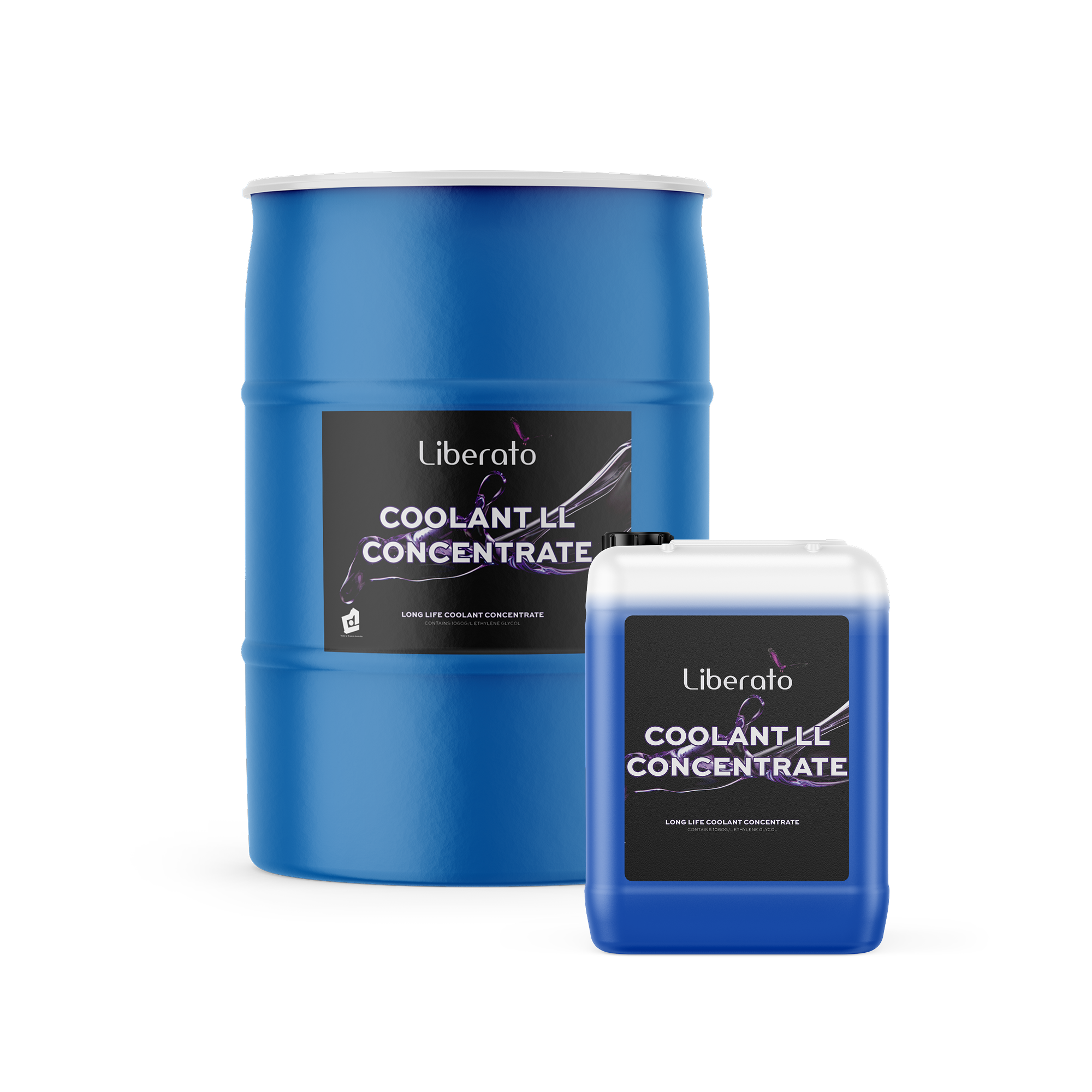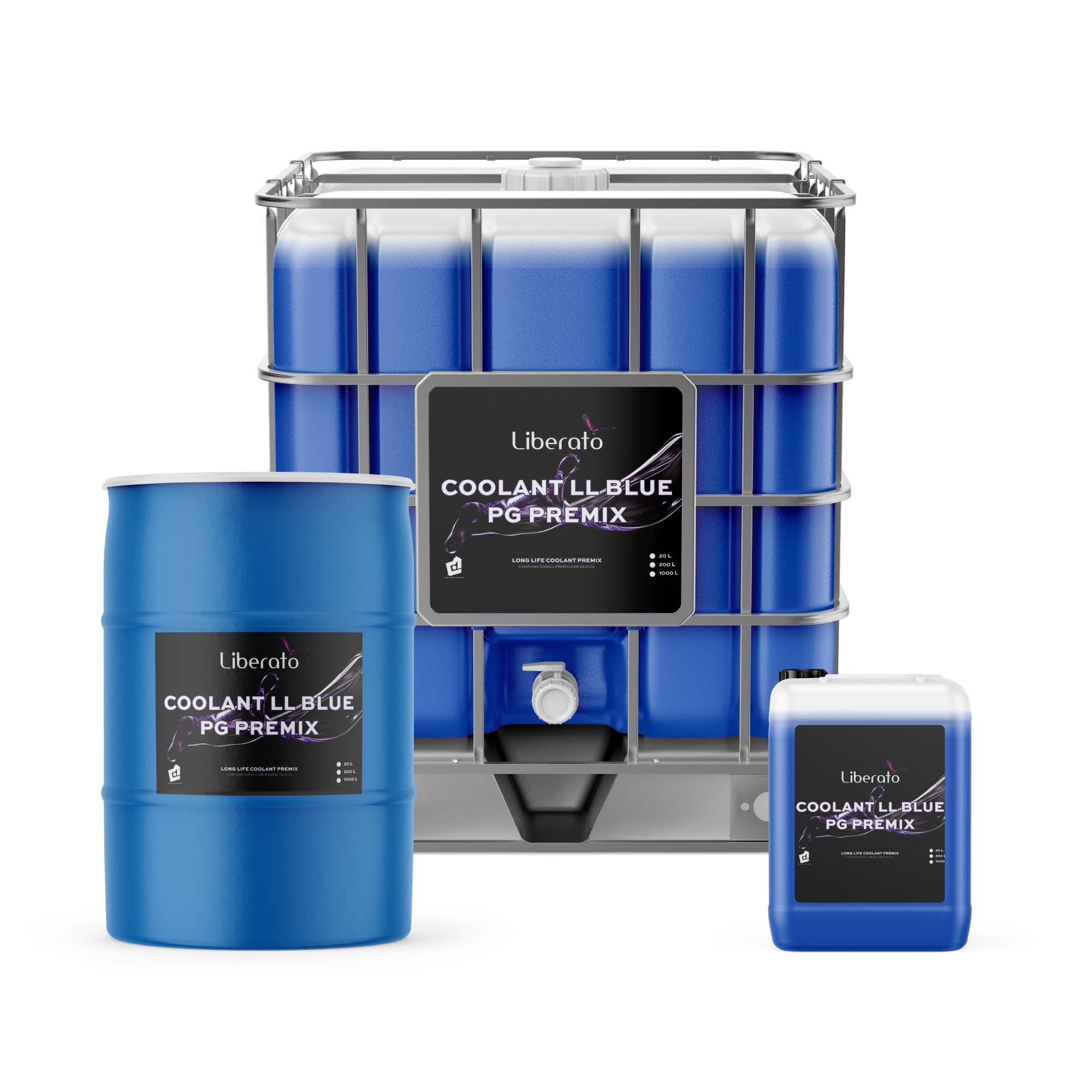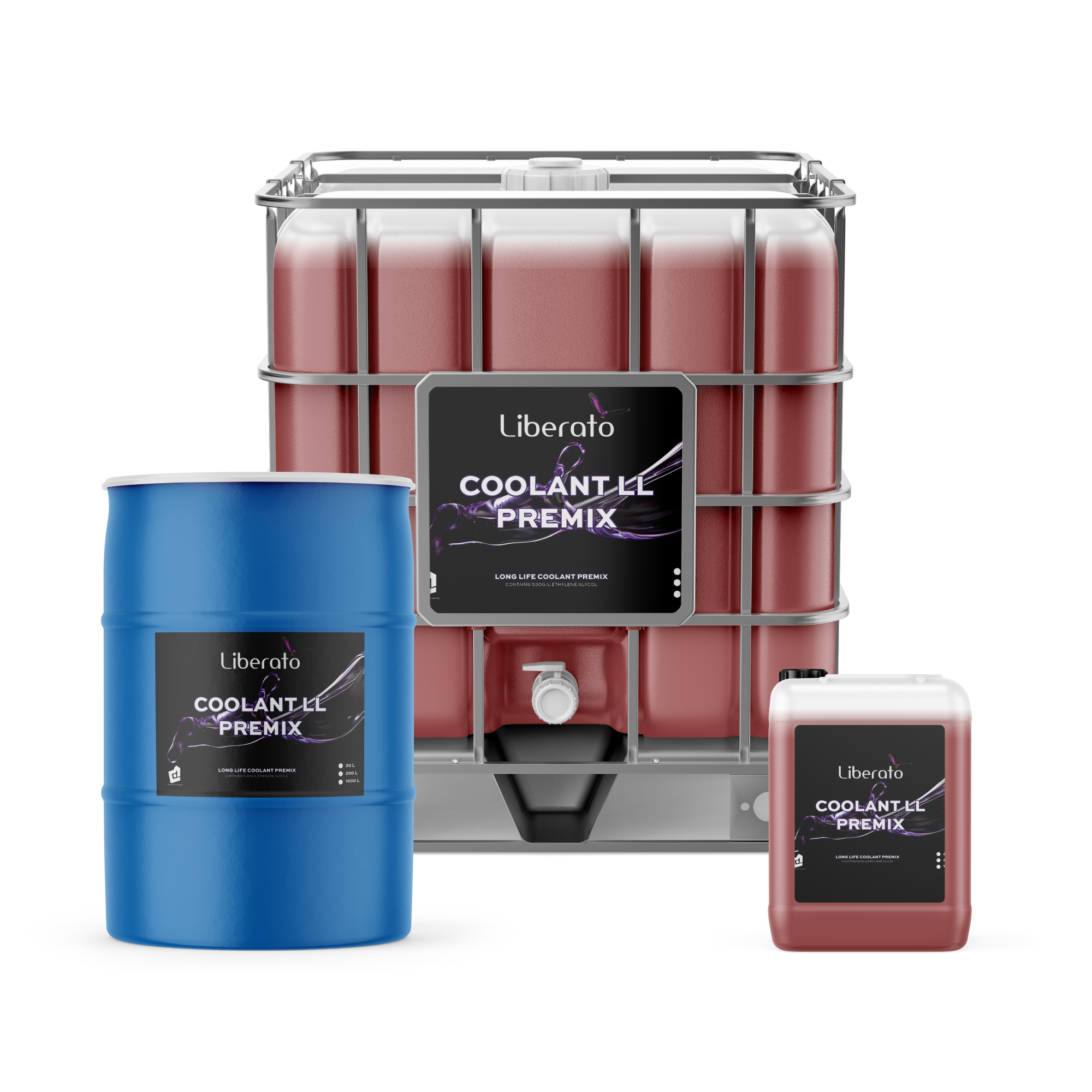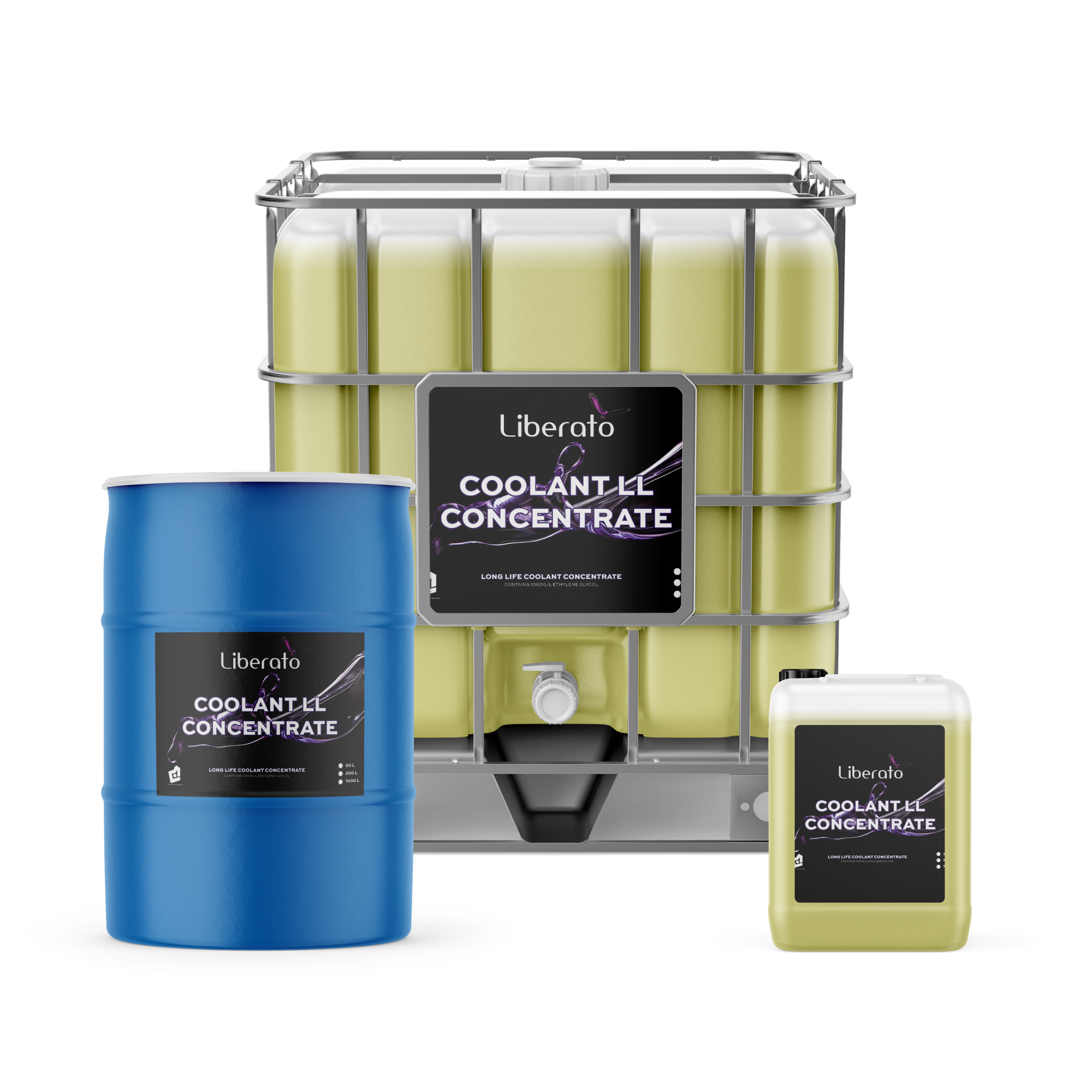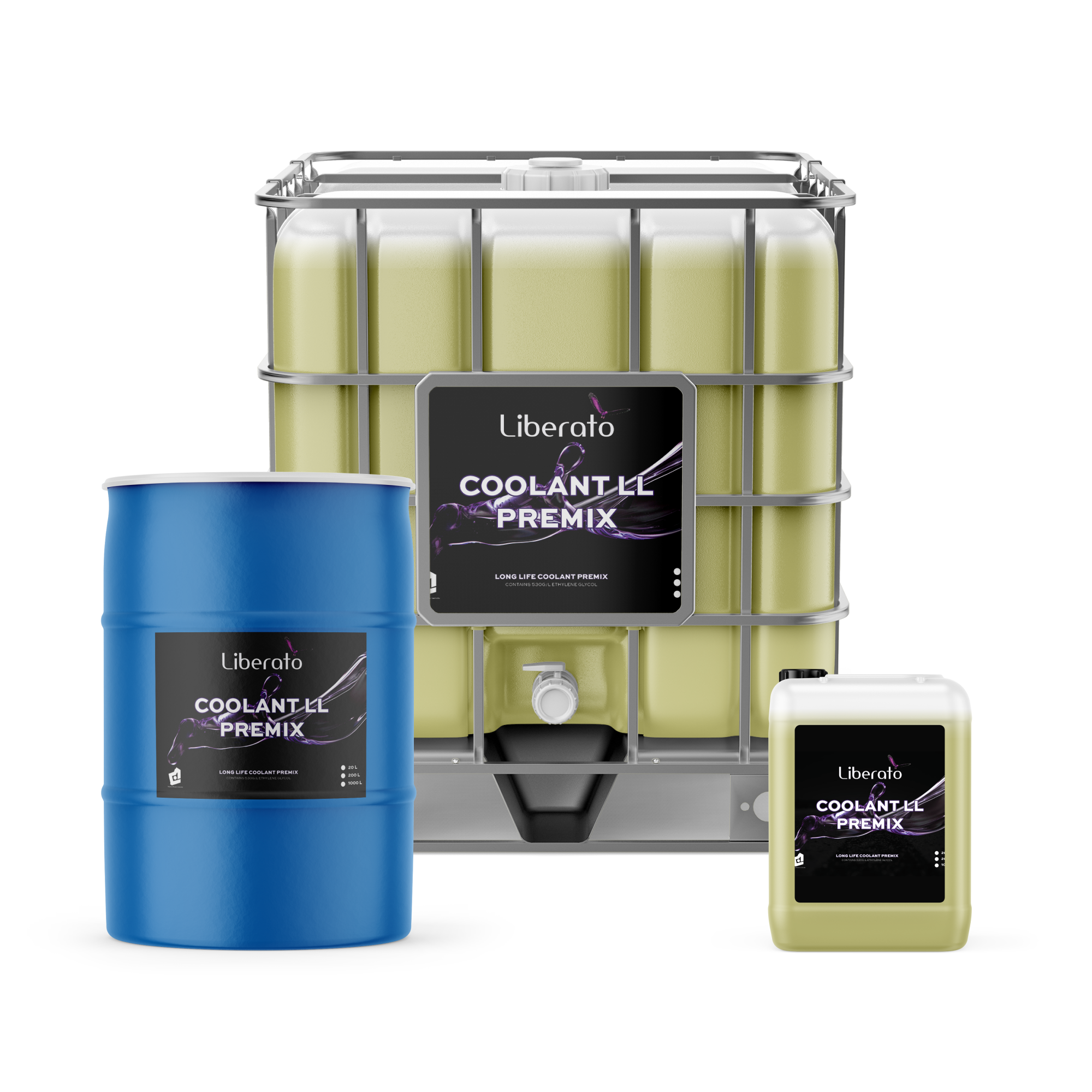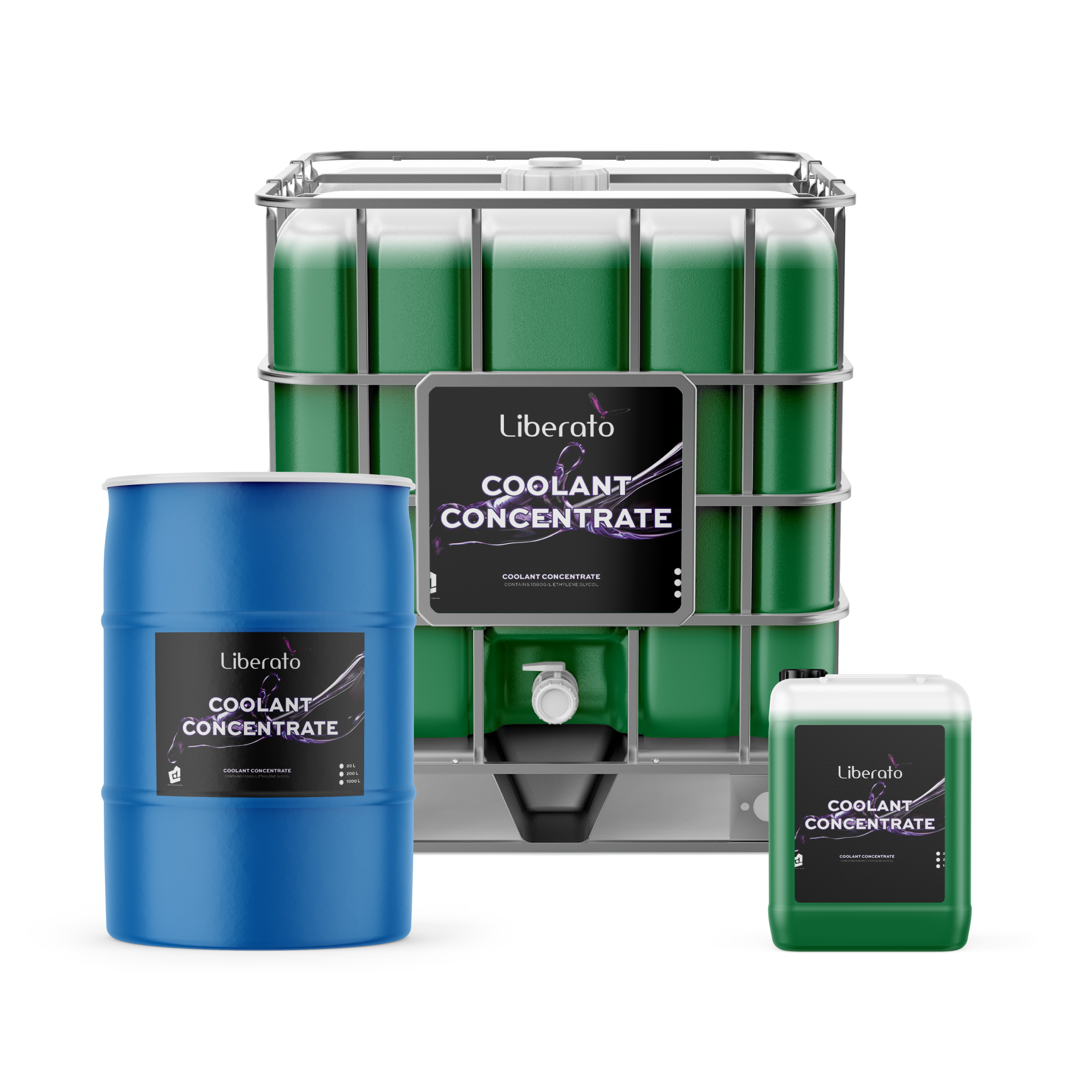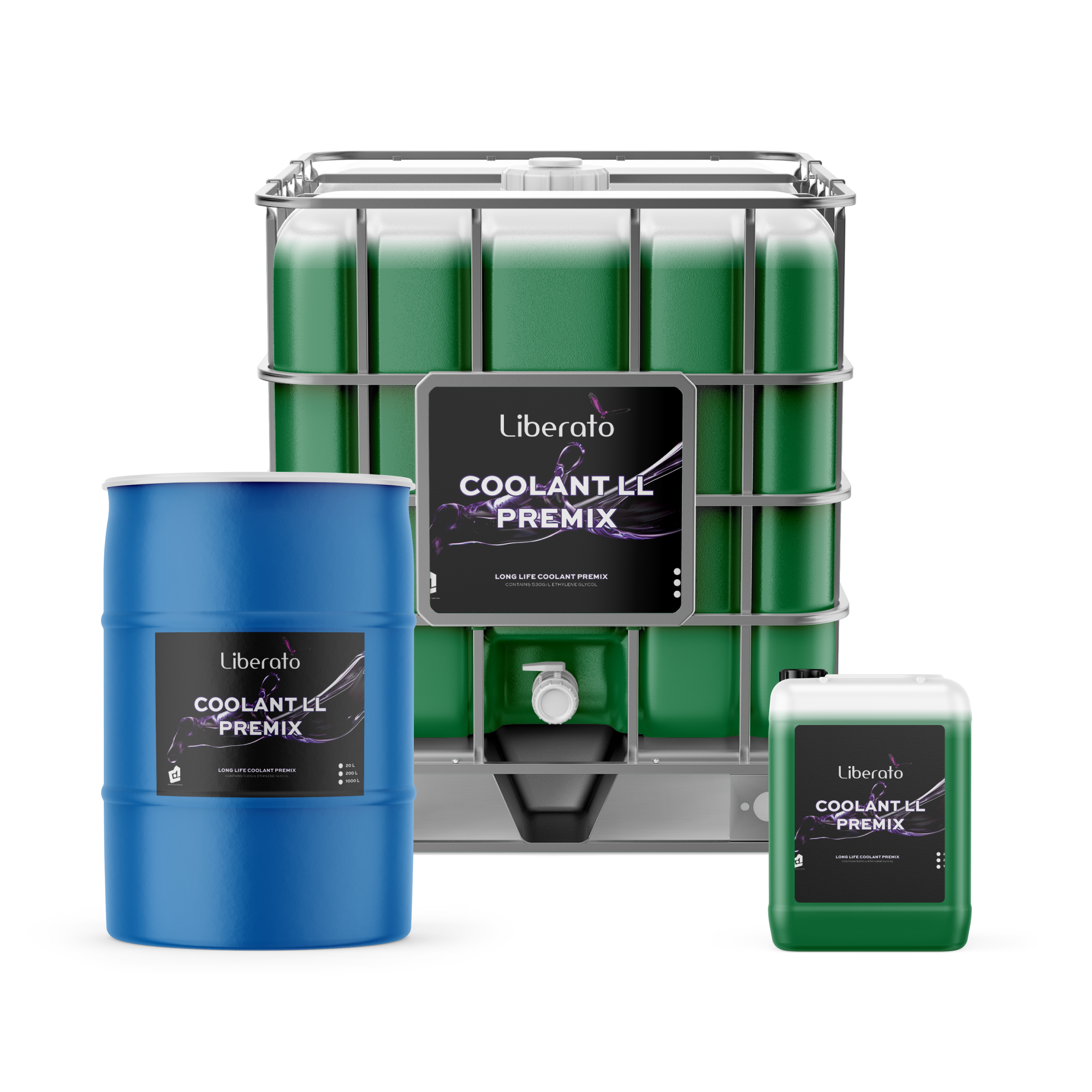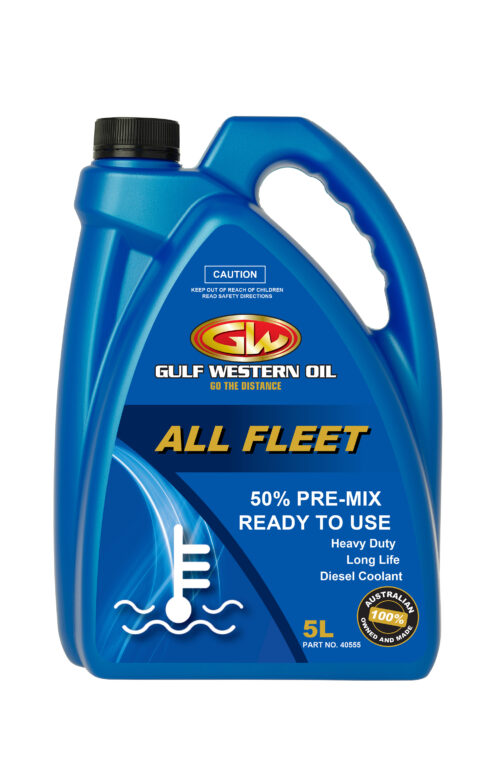Keep engines within their optimum operating temperature using coolants engineered for high-load performance, corrosion resistance, and long service intervals. At Liberato, we supply industrial-grade engine coolant for sectors where failure is not an option: mining, agriculture, transport, marine, and manufacturing.
Coolants
Why Coolant Quality Matters
Coolant is not just a coloured liquid moving through a radiator. It’s a precision-blended liquid substance that plays a critical role in your cooling system. Every time your engine fires, it creates combustion heat and pressure. Without proper cooling, temperatures rapidly exceed safe limits. The coolant absorbs heat from the engine, disperses it via the radiator, and keeps vital components, such as the head gasket, engine block, and thermostat, protected from thermal damage and corrosion.
Using the wrong coolant, or topping up with only tap water, compromises the entire system. Water introduces minerals that corrode radiator cores, scale internal surfaces, and accelerate wear to aluminium radiators and coolant pathways. Our coolants are formulated with corrosion inhibitors and protective additives to keep systems clean, free-flowing, and operating under pressure without failure.
Quick Contact

Formulated for System Integrity and Longevity
At Liberato, we offer a range of coolants tailored to suit modern engine designs and industry-specific demands. These include:
Ethylene glycol-based coolant delivers vital freeze and anti-boil protection. Its high boiling point and low freezing point allow it to function under wide temperature fluctuations, especially where heavy engines are run at full load or left idle for long periods. These coolants remain thermally stable, resist breakdown, and deliver reliable pressure protection throughout the cooling cycle.
Organic Acid Technology (OAT) coolant provides extended service life and excellent protection against scale, rust, and oxidation. Suitable for aluminium radiators and systems in modern-day Japanese vehicles or European trucks, OAT coolant is designed for longer drain intervals and lower environmental impact.
Conventional green coolant is still a reliable and commonly used option. With fast-acting silicate-based corrosion inhibitors, it’s suitable for older systems or mixed fleets needing a widely compatible coolant formula. Despite its shorter lifespan compared to OAT or hybrid variants, its simplicity and effectiveness make it a trusted standard.
All coolants are available in concentrate and ready-to-use pre-mix options, using demineralised water to eliminate the risk of scale or hardness deposits. Each product is tested for freeze protection, boiling point, and additive balance to ensure compatibility and longevity across industrial, marine, and heavy transport systems.
Blue PG Coolant – Long Life Premix 50%
Red Coolant – Long Life (OAT) Concentrate
Red Coolant – Long Life Premix 50% (OAT)
Yellow Coolant – Long Life Concentrate
Yellow Coolant – Long Life Premix 50%
Green Coolant Concentrate
Green Coolant Premix 50%
ALL FLEET CONCENTRATE & 50% PREMIX COOLANT
Safeguarding Your System
Your cooling system relies on more than a full radiator. A properly selected and maintained coolant protects internal surfaces, maintains coolant level and pressure, and prevents the deterioration of critical components such as heater cores, cylinder liners, and head gaskets. When heat transfer is interrupted, due to low coolant level, blockages, or degraded additives, the system begins to fail.
Coolant’s role is to do more than keep the engine from overheating. It ensures uniform temperature across the engine block, protects against freezing in cold weather, and prevents fluid breakdown under high temperatures. Modern engines, especially those with turbochargers or tight clearances, require coolant that will not foam, cavitate, or degrade under constant thermal cycling.
System failure often begins with overlooked details: incorrect coolant mix, failure to flush the system before introducing new coolant, or relying on colour alone as a performance indicator. That’s why using the correct formulation, whether it’s red coolant for extended-life OAT systems or blue coolant for European engines, is critical to system performance.

Understanding Colour and Chemistry
Coolant colours aren’t just visual identifiers; they signal differences in chemistry. Green coolant, for instance, typically denotes a conventional silicate-based formula. Red coolant uses organic acid technology and suits long-haul vehicles with extended service intervals. Orange coolants may indicate hybrid OAT (HOAT) formulations, common in newer Japanese and American engines. Blue coolant is usually a low-silicate formula preferred in many European and Asian cars. Yellow coolant often represents a phosphate-based hybrid, used in high-efficiency systems with sensitive materials.
Mixing incompatible coolant types, such as green and orange or red and yellow, can cause additives to destabilise, forming sludge or precipitating corrosion inhibitors. This neutralises protective qualities and accelerates wear. Before switching coolant types, systems must be flushed and filled with a compatible fluid. Always consult the owner’s manual or speak with our technical team before introducing a new coolant.
Avoiding Common Mistakes
Many system failures stem from basic errors. Adding only tap water is one of the most common and damaging. Tap water introduces minerals that interact poorly with coolant inhibitors, forming deposits and reducing boiling point protection. It also contributes to electrolysis and corrosion across components like the water pump and thermostat.
Another frequent mistake is relying on colour alone when selecting or topping up coolant. Because coolant colours are not standardised across manufacturers, two coolants of the same colour may have incompatible chemical bases. Instead of assuming, always confirm chemistry and compatibility.
Delaying coolant replacement beyond its effective service life is another risk. Even if the coolant looks clean, its corrosion inhibitors degrade over time, leaving the system vulnerable. That’s why periodic replacement, based on hours of operation or kilometres travelled, is critical to maintaining system health.
Monitoring and Replacing Coolant
To maintain consistent protection and system efficiency, coolant levels and chemical composition should be checked regularly. Use test strips or meters to assess freezing point, boiling point, pH level, and corrosion inhibitor presence. If any parameters fall outside the recommended range, a full coolant replacement may be needed.
Top-ups must be performed with the correct formulation, either the same coolant or a compatible pre-mix. Never dilute coolant with tap water. Use only demineralised or distilled water if mixing a concentrate on-site.
Liberato supplies coolants in 20L drums, 200L barrels, and 1,000L IBCs, ensuring your operation has consistent access to the right fluid in the right volume. Our coolants are blended to withstand pressure spikes, maintain stable operating temperature, and support full-system circulation, even during peak thermal load.
Trusted Across Every Sector
Liberato supplies coolant to critical industries where uptime, efficiency, and performance are non-negotiable:
- Mining and earthmoving
- Heavy transport and logistics
- Food processing and agriculture
- Marine and offshore operations
- Construction and drilling
- Industrial machinery and fabrication
From deep pit excavation to long-distance freight corridors, our coolant protects engines where failure costs time, productivity, and money.
Why Choose Liberato
All Liberato coolants meet or exceed AS 2108 and leading OEM standards. We offer both ethylene glycol-based and non-toxic, borate-free formulations, tailored to the system and sector. Whether you need OAT for long-drain European engines, conventional coolant for legacy fleets.
Our team works with you to understand operating conditions, vehicle specifications, and coolant change intervals. We don’t sell off-the-shelf solutions; we deliver tailored system protection.

Talk to Us
Not sure if your orange coolant is compatible with your yellow one? Need help identifying whether your system requires a red OAT or a green conventional coolant? Speak to our technical support team.
We’ll help you choose the correct fluid, flush and refill method, and maintenance schedule to keep your system operating with maximum thermal stability, corrosion protection, and pressure tolerance.


